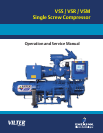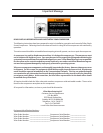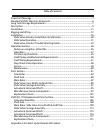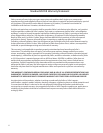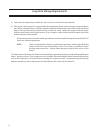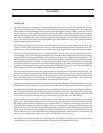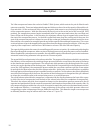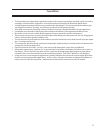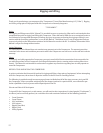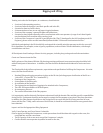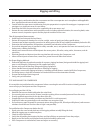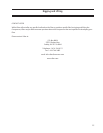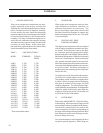
7
The procedure described is a general recommendation for long term storage (over one month of no operation)
of Vilter Manufacturing packages and compressors. While this procedure is intended to cover most of the
commonly encountered situations, it is the responsibility of the installation rm and end user to address any
unusual conditions. We suggest using the accompanying Long Term Storage Log sheet for recording purposes
to validate the appropriate procedures.
Prior to start-up, Vilter recommends that a complete system pressure check be performed. Upon verication
of the system integrity, a comprehensive evacuation procedure should be completed to ensure a dry system
before gas is introduced. The oil circuit of any compressor is to be primed at initial start-up through the pre-
lube oil pump on screw compressors.
Warranty of the system remains in effect as described in Section 5, Product Warranty and Procedures.
* If the unit is designed for indoor duty, it must be stored in a heated building.
If the unit is designed for outdoor duty, and is to be stored outdoors, a canvas tarp is recommended for
protection until installation is imminent. Adequate drainage should be provided, by placing wood blocks
under the base skid, so that water does not collect inside the base perimeter or low spots in the tarp.
* All compressor stop valves are to be closed to isolate the compressor from the remainder of the system. All
other valves, except those venting to atmosphere, are to be open. It is essential that the nitrogen holding
charge integrity be maintained.
* Cover all bare metal surfaces (coupling, ange faces, etc.) with rust inhibitor.
* Desiccant is to be installed in the control panel. If the panel is equipped with a space heater, it is to be
energized. If the panel does not have a space heater, use a thermostatically controlled 50-watt light bulb.
Use an approved electrical spray-on corrosion inhibitor for panel components (relays, switches, etc.)
* All pneumatic controllers and valves (Fisher, Taylor, etc.) are to be covered with plastic bags and sealed with
desiccant bags inside.
* System and compressor pressures (unit is shipped with dry nitrogen holding charge approximately 5 psi
above atmospheric pressure) are to be monitored, on a regular basis, for leakage. It will be necessary to
add a gauge to monitor the system holding charge pressure. If a drop in pressure occurs, the source of
leakage must be found and corrected. The system must be evacuated and recharged with dry nitrogen to
maintain the package integrity.
* Motors – (NOTE: The following are general recommendations. Consult the manufacturer of your motor
for specic recommendations.)
1) Remove the condensation drain plugs from those units equipped with them and insert silica-gel into the
openings. Insert one-half pound bags of silica-gel (or other desiccant material) into the air inlets and outlets
of drip-proof type motors.
NOTE: The bags must remain visible, and tagged, so they will be noticed and removed when
the unit is prepared for service.
Long Term Storage Requirements



